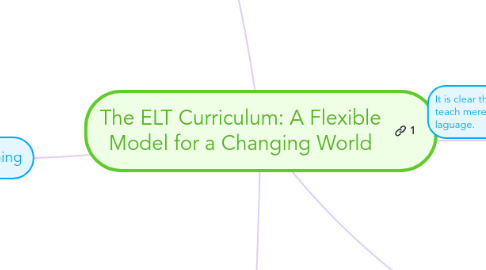
1. Curriculum: A definition
1.1. Basic components of the Didactics
1.1.1. The curriculum
1.2. Which provides the teacher
1.2.1. Security of a coherent framework
1.3. There
1.3.1. Flexibility
1.3.1.1. Respond to
1.3.1.1.1. Needs
1.4. Recognizes
1.4.1. To the learners
1.4.1.1. Active participants
1.4.1.1.1. Language learning
1.4.1.1.2. Process
2. Models of curriculum planning
2.1. Both Clark (1987) and White (1988)
2.1.1. Are refer
2.1.1.1. To an framework developed
2.1.1.2. By
2.1.1.2.1. Skilbeck (1982)
2.2. Three traditions
2.2.1. Are
2.2.1.1. Identified as Classical Humanism
2.2.1.2. Reconstructionism
2.2.1.3. Progressivism
2.2.2. They relate
2.2.2.1. With
2.2.2.1.1. The structural grammar
2.2.2.1.2. Systems approach
2.2.2.1.3. The notional functional syllabus
2.2.2.1.4. The process-procedural approach
3. Syllabus design, methodology and evaluation
3.1. To design a syllabus
3.1.1. Is say
3.1.1.1. What gets taught
3.1.1.2. In what order
3.2. Course content
3.2.1. Procedures
3.2.1.1. Usually it expressed
3.2.1.1.1. Of form
4. It is clear that it is no longer enough to teach merely the structures and rules of laguage.
4.1. Approaches
4.1.1. Curriculum design
4.2. Curriculum
4.3. The communicative approach
4.4. http://campus07.unad.edu.co/ecedu01/pluginfile.php/1607/mod_resource/content/2/Course_Content_didactics.pdf
4.5. Shortcomings and lack
4.5.1. Grammar model
4.5.1.1. Language teaching systems
4.6. Laguage
4.6.1. The communication
4.6.2. Teachers
4.6.2.1. It develops in the students
4.6.2.2. The ability to communicate effectively
4.6.2.3. A wide range of contexts
4.6.2.3.1. Professional
